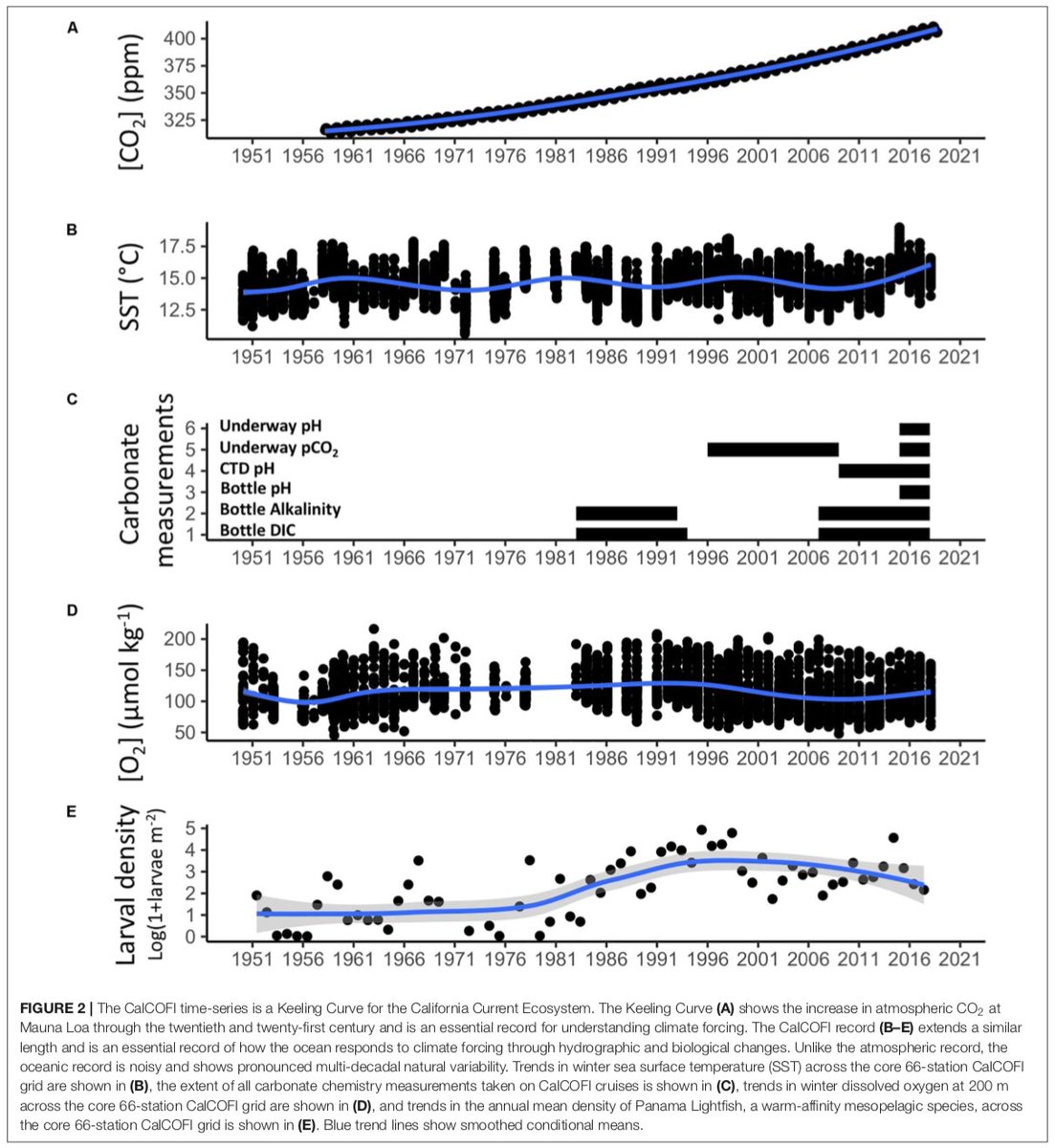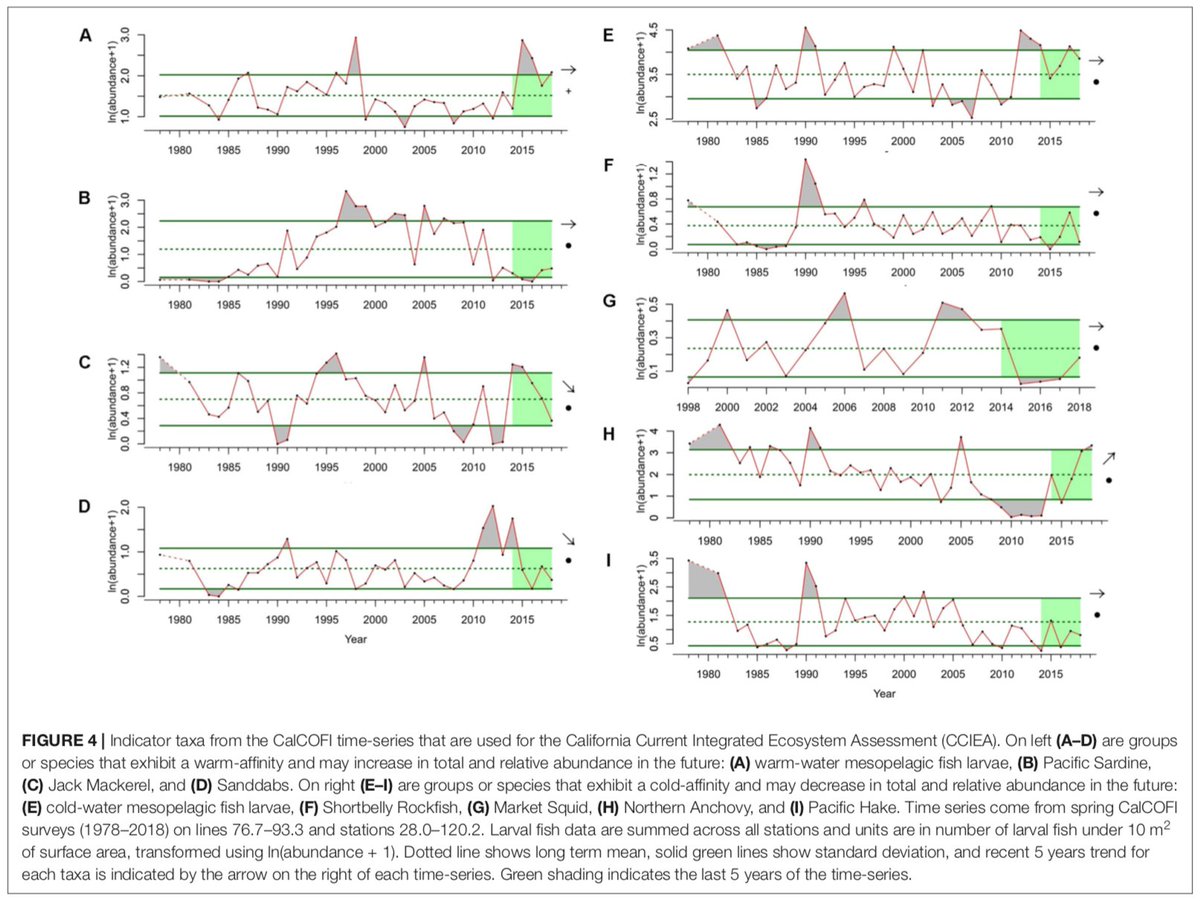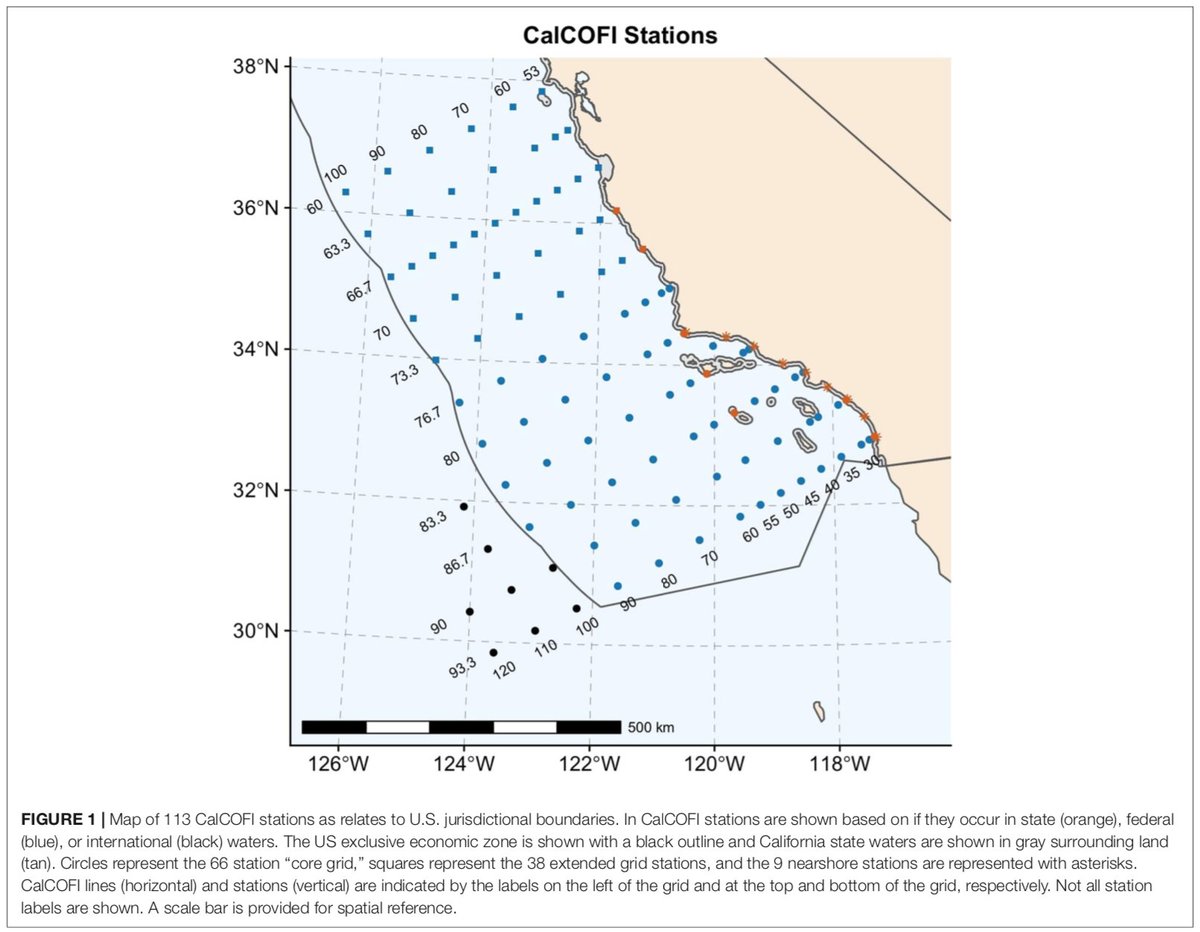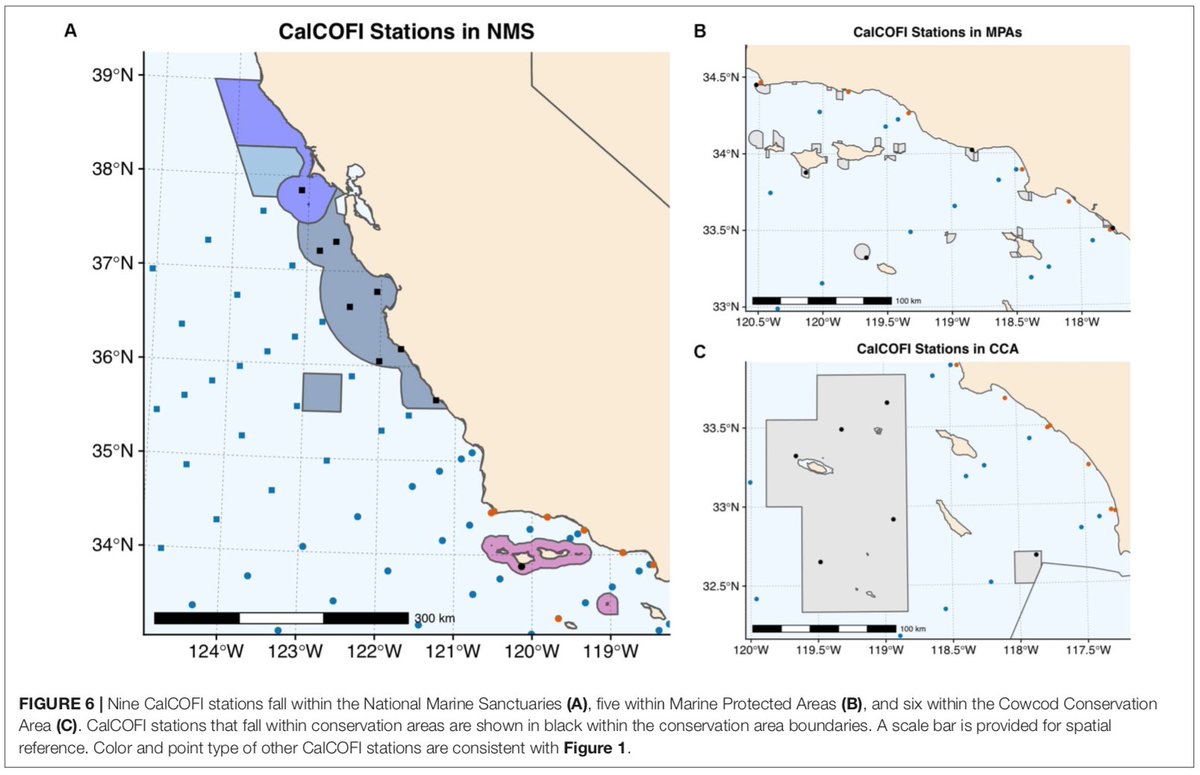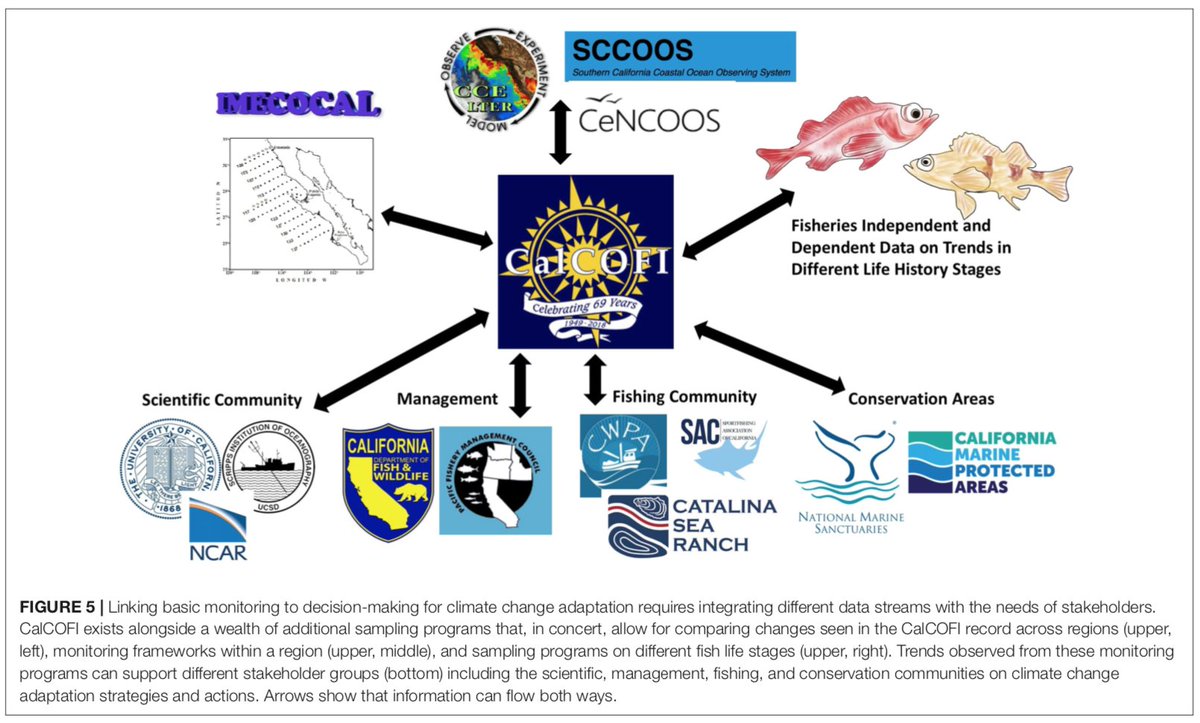Our new study on linking monitoring data to stakeholder needs for responding to climate change is out and freely available @FrontMarineSci. This was a contribution from #OceanVisions. I& #39;m trying my first Twitter thread to summarize results (wish me luck) https://www.frontiersin.org/articles/10.3389/fmars.2019.00695/full">https://www.frontiersin.org/articles/...
Our goal was to develop a framework that other monitoring programs could use to link their monitoring data w/ stakeholder needs relating to climate change impacts & adaptation. This is an issue near & dear to the #oceanobs conversation & #UNDecadeforOceanScience @scripps_climate
We used the @calcofi Program as a case study to tackle this. The #CalCOFI Program is a ship-based ecosystem monitoring program on the US West Coast which is now in its 70th year. It is a partnership between @NOAAFisheries, @Scripps_Ocean, and @CaliforniaDFW
Step 1 was to synthesize what monitoring data the program collected that was relevant to climate change considerations and synthesize available results. This can basically be summarized as, “find out what exists”
We found that the #CalCOFI Program has climate change-relevant time series of hydrographic (0-500 m) and biological variables that extend the full length of the @Keeling_curve. That’s pretty amazing. Many studies with #CalCOFI data offer guidance for how climate affects the #CCE
Step 2 was to examine what climate projections are available for the region and to frame observed changes within the context of expected changes. This can be summarized as, “find out what’s likely to happen” & highlights areas where monitoring data can support model validation
We used the Large Ensemble Community Project climate model outputs (Kay et al. 2015) to examine projected changes in SST, pH, and oxygen for the #CalCOFI region under RCP8.5 "business as usual" scenario. A projected ~3°C increase in mean SST between 2019-2100 is very concerning
Step 3 was to consider the different policy frameworks that guide management for the region, and identify how data from the monitoring program are (or aren& #39;t) already being used for decision-making processes and identify gaps
We identified a number of ways physical and biological measurements from #CalCOFI were being used to support fisheries and ecosystem decision-making. For example, the ichthyoplankton time series are used as indicators in the California Current Integrated Ecosystem Assessment
Step 4 was to consider who different stakeholders are and consider their unique needs and concerns about climate change impacts & adaptation. We took two approaches to this, a spatial approach and a topical approach
For the spatial approach, we identified overlap between #CalCOFI& #39;s sampling footprint & state & federal management jurisdictions. 16 stations are in state waters, 89 stations are in federal waters, and 8 stations are outside the US EEZ. Ship-based sampling is done at each station
We also conducted a spatial analysis to look at how the #CalCOFI sampling grid overlaps with different conservation jurisdictions including the Cowcod Conservation Area, California #MPAs, and the National Marine Sanctuaries @CaMPAMnetwork @CA_MPA_CN @sanctuaries
In addition to the spatial approach, we used a topical approach to identify different stakeholder groups. We identified the scientific community, management community, fishing & aquaculture community, and conservation community as stakeholder groups of #CalCOFI data
We also considered how #CalCOFI interacts with other regional monitoring programs including #IMECOCAL off Mexico, @cce_lter, @SCCOOS_org & other @NOAAFisheries surveys. This allowed us to consider how data across monitoring programs can be leveraged for climate-relevant guidance
Viewing #CalCOFI as part of a US West Coast web of monitoring programs and stakeholder groups allowed us to consider how climate-relevant information flows between groups and identify areas for improvement
Other monitoring programs can follow these 4 easy steps to better connect their monitoring data to stakeholder needs relating to climate change impacts & adaptation. If you give it a try, let me know how it goes. Thanks to co-authors, reviewers, & all who provided feedback.
In working on this paper, we realized that we still had a lot to learn about stakeholder needs and we are holding a #CalCOFI stakeholder workshop to address this, co-hosted by @Scripps_Ocean, @CASeaGrant, @NOAAFisheries, and @CaliforniaDFW. Stay tuned!

 Read on Twitter
Read on Twitter